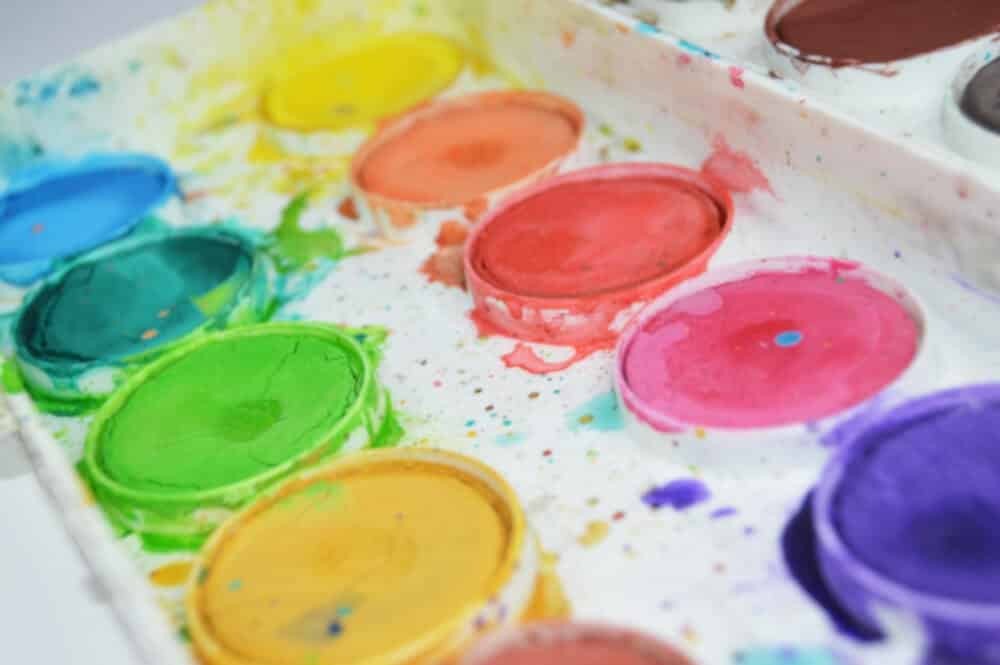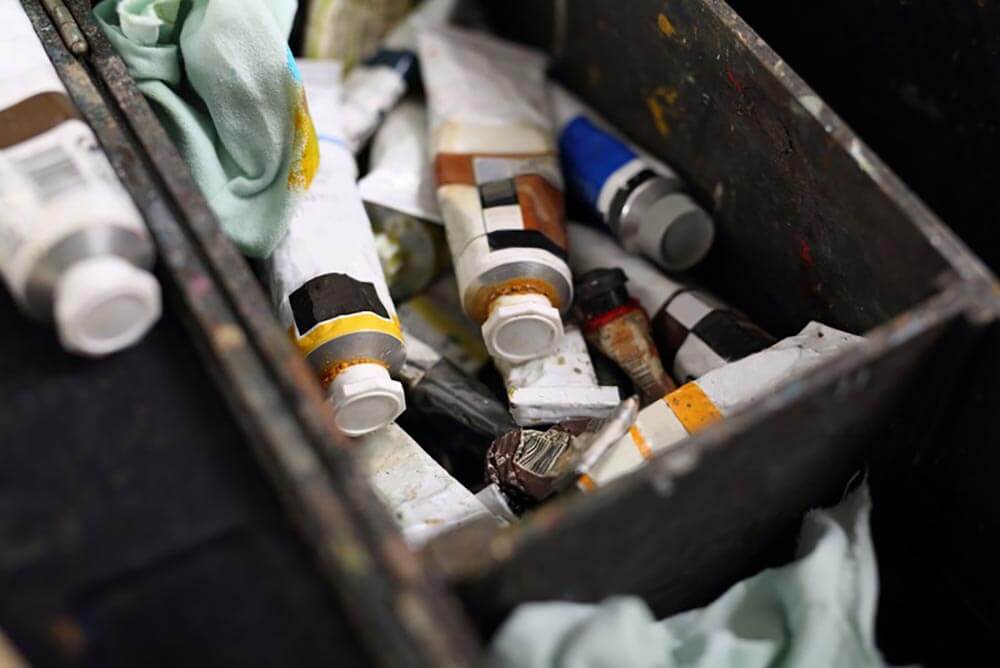In the painting world there are numerous types of paint at an artist’s disposal which makes it easy to get caught up in working with only one type of paint you’re comfortable with. Gouache paint, watercolor paint, and acrylic paint have some parallels and a few differences. It may surprise you to find out that the one type of paint you have been content with for quite some time is relative to another type you might want to contemplate painting with.
Let’s get started:

Table of Contents
Gouache Paint
Gouache paint has been around for long over 700 years, but is strangely not well-known or used. It consists of three main ingredients, pigment, binder, and additives. Gouache is very comparable to both acrylic paint and watercolor paint but is its own entity.
Gouache paint is opaque but becomes translucent when water is added. When using Gouache you have the option to either water it down or build up the consistency of the paint. The end result of a gouache painted piece is a radiant bright piece of artwork with a matte finish.
In comparison to acrylics, gouache paint dries quickly but can be reworked on its surface long after the artwork is completed. An acrylic painted piece can be placed directly into a frame while a gouache painted piece needs to either have glass placed over it before framing or be varnished upon completion.
Watercolor paint and gouache paint are almost like cousins. It is available in small portions and is typically mixed with water prior to painting.
But check this out:
While gouache paint is similar to water color paint, it is different in that it’s more pigmented, is heavier, and provides more of a texture when painting. Another difference between watercolor and gouache paint is that solid white pigment is added to the ingredients to make gouache paint by using either chalk or acrylic paint.
Although gouache paint is not all that predominately used, many artists have great things to say when working with the paint. In this thread on wetcanvas.com users review their many reasons for appreciating the use of gouache paint.

Watercolor Paint
Most of us have extensive experience in the area of watercolor paint being that we’ve all used it as kids. Walk into your local dollar store and you can pick up a pallet for 99 cents!
Which is something really cool to think about considering watercolors have been used for centuries upon centuries (think, Egyptian times) and now you will see whole preschool classes creating their own little masterpieces with watercolor paint.
Watercolor paint is inexpensive but can produce a beautiful end result. It dries quickly, is almost translucent, and produces a matte finish. Artists can layer watercolor paint due to its translucence in order to create a brighter image.
Nevertheless, watercolor paints do require a special type of paper due to the fact that its base is water so the non-absorbency of the paper is important. Watercolors can easily bleed through something like printer paper because it is extremely absorbent.
A silly but perfect example is allowing a child to use water colors on their coloring book pages. The instant the brush touches the page the color will spider web out and barely any color will show on the page.
On the other hand, as the artist you are in control of the color outcome when painting with water colors. If you add more water the color will be almost translucent. If you only use a small amount of water the color will be deeper.
Imagine this:
You’ve completed your watercolor masterpiece and a single drop of water lands on the page. Instantly your work is altered.
Watercolors may be cheap to buy and come off as one of the easy types of paint to use, in reality it is difficult to master. Finding the perfect water to paint ratio takes work and diligence. It is also much more problematic to cover up a mistake when using watercolor paint due to its translucent factor.

Acrylic Paint
Unlike gouache and watercolor paints, acrylics are more forgiving in that they are a deeper and thicker based paint as opposed to translucent and more water based. Acrylic paint is used by artists who are prepared to work quickly and attentively.
Acrylic paint offers more durability than gouache or watercolor paints in that it will not dwindle as fast when exposed to light, they can withstand dust, and are waterproof. Paintings made with acrylic paint will be considerably brighter than those created with watercolors. Acrylics can be used with little to no water in order to produce a denser, stunning, stroke with the brush.
Acrylics can be used on various different surfaces such as paper, wood, glass, plastic, the list goes on. Watercolors really can only be properly used on paper. You can essentially paint on anything with acrylic paint in tow.
With acrylics you can create more of a crisp painting and work lines and even create letters if necessary. You do not have that advantage when using watercolors. You also have the ability to use other tools when working with acrylics like palette knife whereas with gouache and watercolor paint that is not an option.
So what’s the problem?
Well, acrylics dry very quickly which can be good or bad depending on the artist who is painting. Another downside to acrylic paint is that you cannot rework acrylic paint once the piece is completely like you can with gouache paint. Acrylics are also a tad more expensive than their gouache and watercolor kinsfolks.
To Wrap Things Up On Comparing Gauche vs. Watercolor vs. Acrylics
As an artist you need to get a feel for what works best for you. While one artist might love the idea of being able to renovate their painting 10 years from now because they utilized gouache paint, another artist might rather have their painting be frozen in time, knowing that it’ll remain the way they left it for years to come.
While gouache paint, watercolor paint, and acrylic paint may have their differences they all have the ability to create a beautiful masterpiece. They just require the artist and their brush (or palette knife!) to paint it!